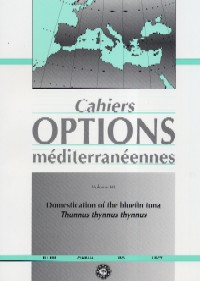| Article précédent | p. 447-451 | Article suivant |
Restoration and rehabilitation of temperate pastures using grazing management: A biometrical approach
In long-term experiments, which examine the effects of management strategies on pasture species over time, there are significant challenges in the design of the trials and the analysis of the resulting data. An inventory of the original diversity is essential if we are to overcome the potential bias in the estimation of treatment effects due to a lack of consistency. The resulting repeated measurement data set presents significant modeling challenges with unequal times between measurements, heterogeneous variances at these times and decreasing plot correlations as time between measurements increases. This paper describes the fitting of cubic smoothing splines to longitudinal data using the approach of Verbyla et al. (1999), which uses linear mixed models and residual maximum likelihood (REML) and includes covariance modeling appropriate to the structure of the data.
- [ Afficher ]
- [ Télécharger ]
- [ Exporter la citation ]
Vous pouvez télécharger la citation au format :
- [ Imprimer ]
-
Mots-clés
AMELIORATION DES PATURAGES, ANALYSE DE DONNEES, BIOMETRIE, GESTION, PATURAGE, TEMPSCiter cet article
Orchard B.A., Cullis B.R., Lodge G.M., Harden S. Restoration and rehabilitation of temperate pastures using grazing management: A biometrical approach. In : Ferchichi A. (comp.), Ferchichi A. (collab.). Réhabilitation des pâturages et des parcours en milieux méditerranéens . Zaragoza : CIHEAM, 2004. p. 447-451. (Cahiers Options Méditerranéennes; n. 62). 11. Réunion du Sous-Réseau Ressources Fourragères Méditerranéennes du Réseau Coopératif Interrégional FAO-CIHEAM de Recherche et Développement sur les Pâturages et les Cultures Fourragères, 2002/10/29-2002/11/01, Djerba (Tunisia). http://om.ciheam.org/om/pdf/c62/04600205.pdf



